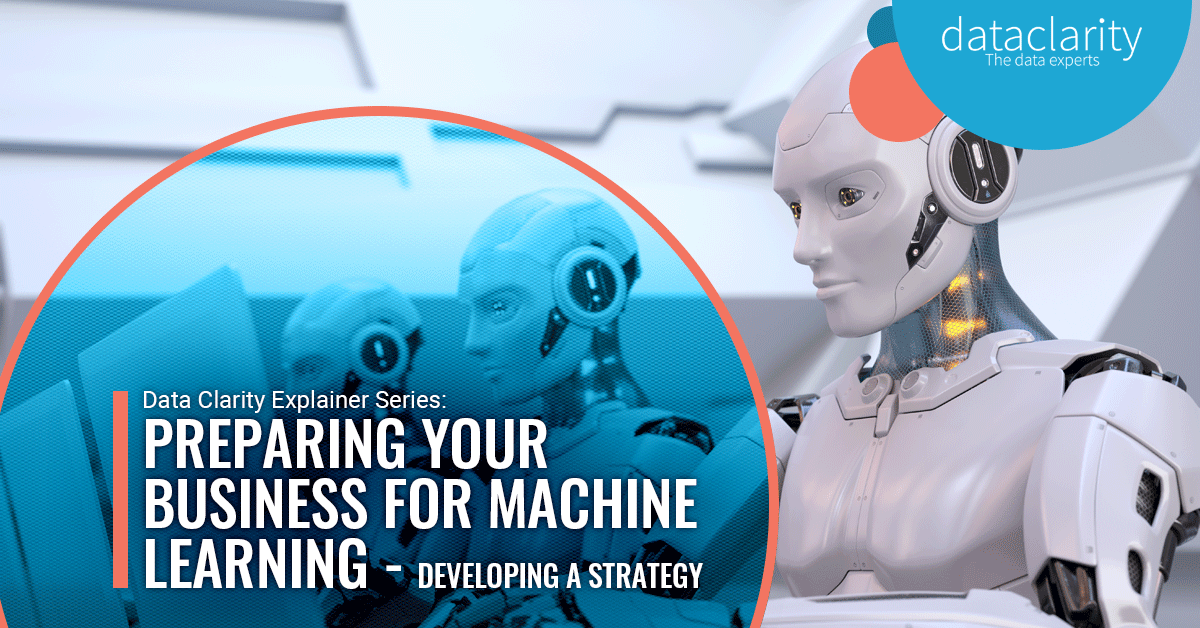Preparing your business for Machine Learning – Developing a Strategy
13th January 2021
Machine learning initiatives are set to become more vital than ever for businesses across every industry. For retailers, the potential of machine learning means gaining a full 360-degree view of their customers, predicting patterns and improving decision making with accuracy, to reduce waste and increase sales. You may be planning your machine learning initiatives now. But have you considered a full machine learning strategy for success?
We have put this guide together to help business leaders understand the challenges and processes to consider when undertaking a machine learning solution. There are three early, essential stages to manage:
- Defining outcomes
- Making data accessible
- Ensuring data is clean
Read our guide to Data Strategy: Sales and Marketing Initiatives will thrive on Data.
Step One: Define the desired outcomes.
It may seem obvious, but the first step for any business project – data related or not – is to define a clear set of desired outcomes. This ensures that you and your team understand the full parameters of what you are setting out to achieve, the expected results from these efforts, and how you are going to achieve this.
In a machine learning initiative, it is vital to draw up a strategy that defines the desired outcomes, as this will affect every step that follows. In particular, consider:
- Is this a one-off project or an ongoing solution?
- Do you have the internal resources and expertise required in-house?
- What data will be needed to achieve success? Do you have access to this data?
Answering these initial questions will help guide your efforts going forward.
Step Two: Ensure the necessary data to achieve outcomes is accessible.
Once you have defined a clear set of desired outcomes, the next step is to ensure that the data you want to work with is accessible. The data you need may come from within your organisation, such as customer data from a CRM, or stock data from a WMS. External sources may also contain valuable data, such as weather information database or stock exchange information.
If you have the internal IT resources available, you may be able to perform this step in-house. In this case, work closely with your IT team to align the data strategy to your overall business objectives. You can read our guide to achieving alignment here. Alternatively, a data audit can provide the necessary insights into where your data is stored.
At Data Clarity, we provide a full data audit to help you understand the data that your organisation currently stores and to show you how you can fully leverage this valuable resource.
Organisations will also need to consider how they are going to bring this data together and unify records. Here at Data Clarity, we have developed ClarityOmnivue to specifically solve the challenges businesses face trying to mine multiple disparate data sources to deliver one 360-degree view of customers and business key performance indicators. ClarityOmnivue transforms disparate data into a unified data solution that enables more informed business decision. For more information on how ClarityOmnivue can be of benefit to your business, click here.
Step Three: Clean the Data to ensure accurate results.
The final step when preparing your business for machine learning is the most vital – making sure you are working with clean data. If our data is of low quality, then the decisions organisations make, based on that data, and the outcomes of any machine learning initiatives will be ineffective. That is why data hygiene and data cleansing are critical to ensure an acceptable level of data integrity.
Since our decisions are typically based on data sets, if the data is of poor quality, our decisions will be too. Thus, data integrity is critical as it allows us to have high quality data, leading to better quality decisions.
What defines high quality data? The answer is a data set that is accurate, consistent, valid, complete, and uniform. We go into more details about why high-quality data matters in this explainer article here. But here is a high-level overview of the benefits of high quality data:
- Improved Decision Making
- Drives faster customer acquisition
- Saves resources
- Boosts productivity
- Increase revenue
For our full beginners guide to data cleansing, read more here.
Final Thoughts
Machine learning initiatives can greatly boost your organisation’s decision making, deliver strategic insights, and foresight. But results can only be achieved when the expected outcomes are outlined, the data needed is accessible, and most importantly, the data quality is high.
If your organisation is looking for machine learning solutions, talk to our data experts today to find out how your data can work better for you.
